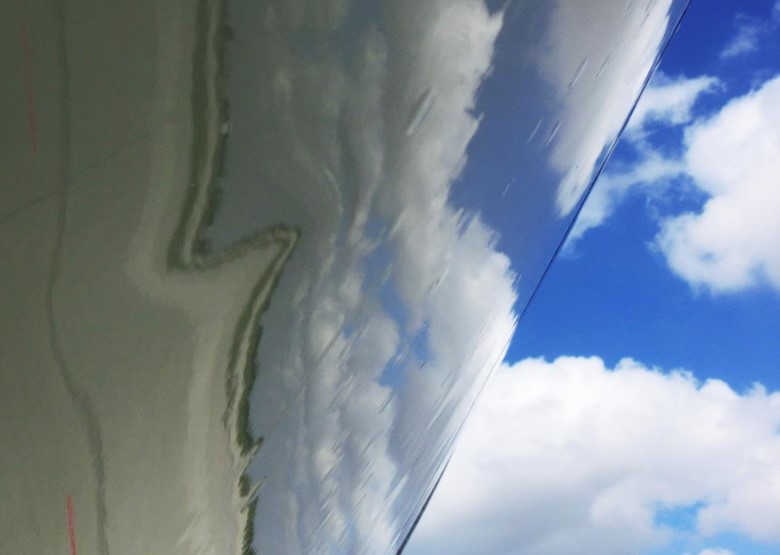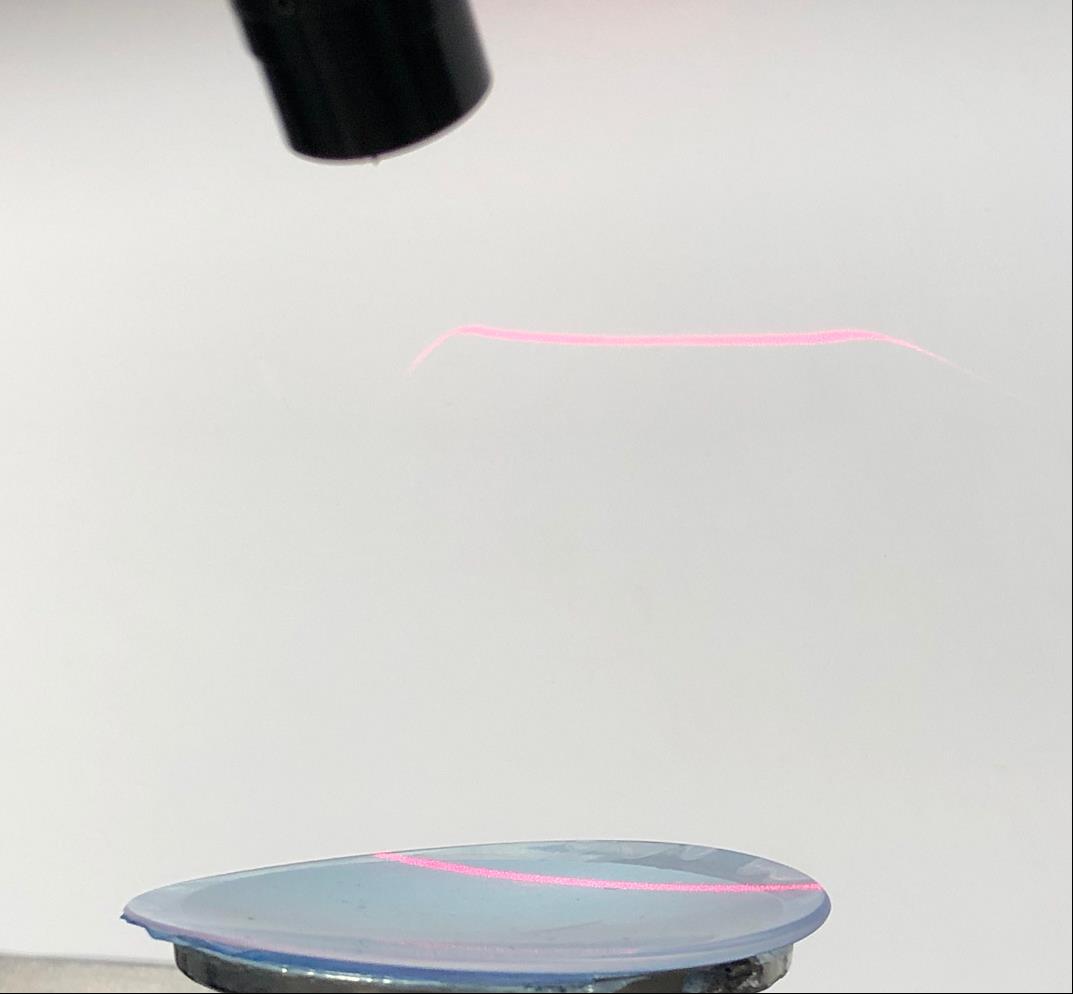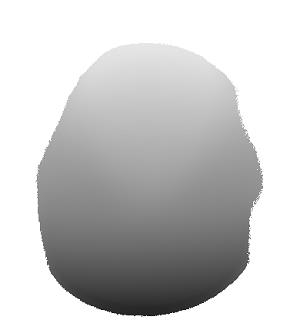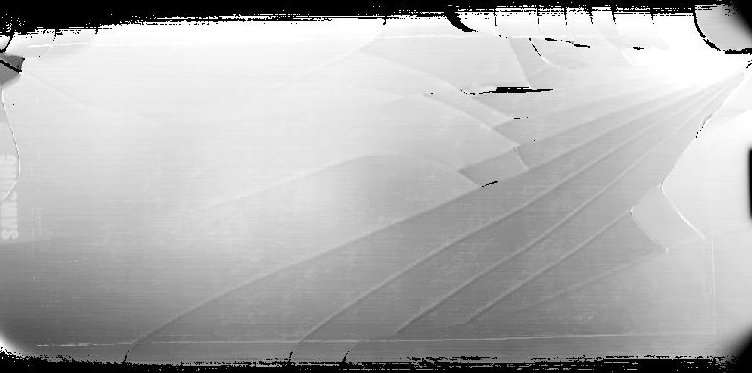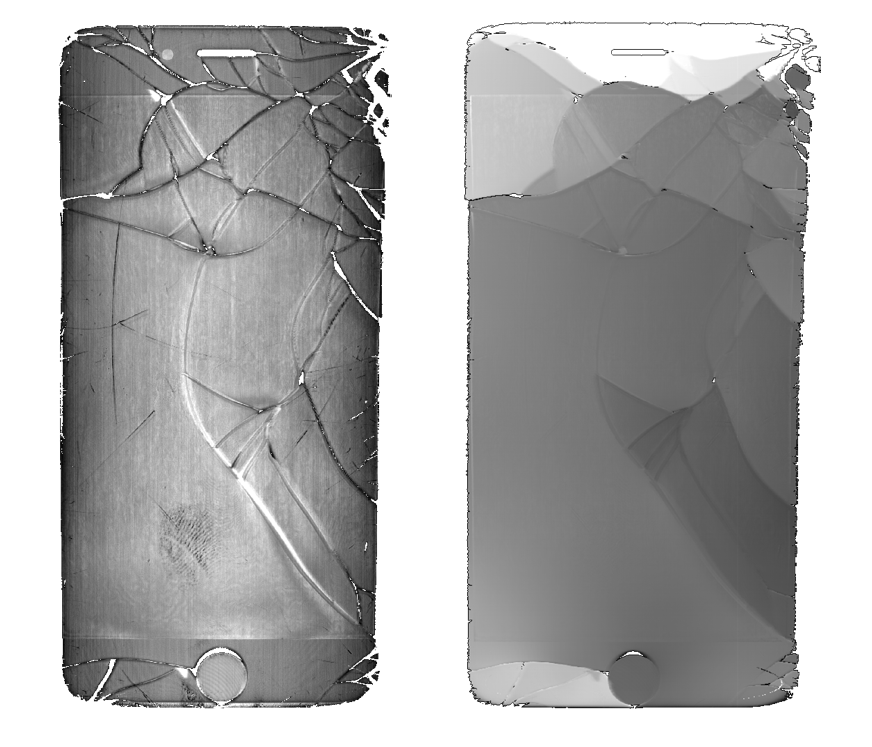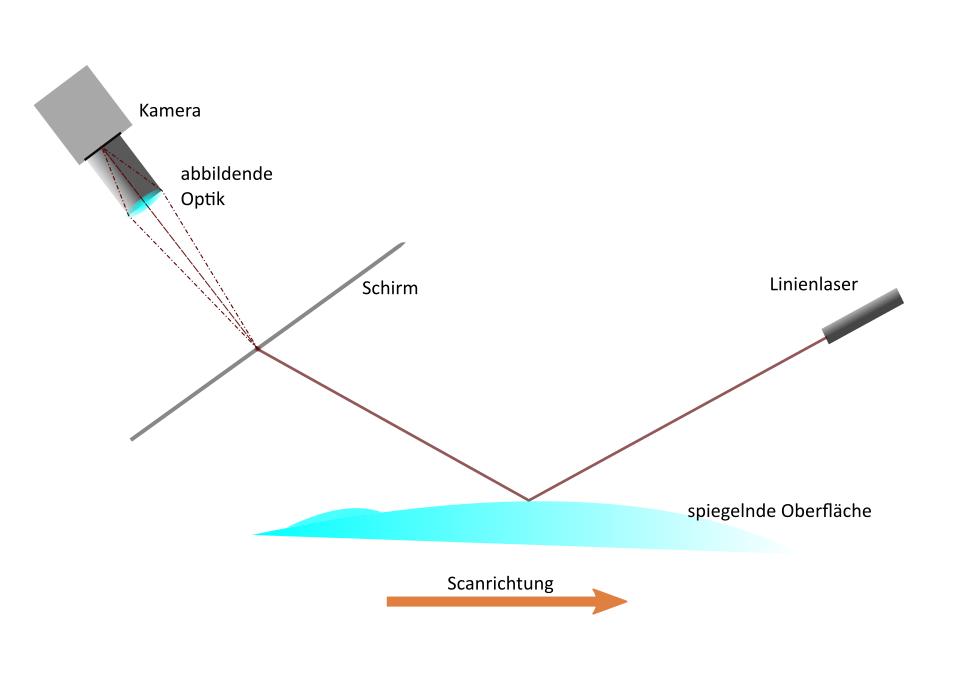Inverse deflectometry is a technique developed at and patented by the Fraunhofer IIS that is particularly suited to industrial applications.
Inverse deflectometry is a scanning procedure, meaning that the object to be inspected is imaged in motion (alternatively, the sensor head can be moved instead).
Given that in industrial manufacturing the test object often travels along an assembly line, implementation of the procedure is straightforward. In many cases, it also permits considerable time savings, as under optimal conditions no additional measurement time is required.
Another major benefit of this procedure is that it can be used to capture transparent objects such as optical glass. This is a problem for conventional deflectometry, in view of the additional reflection that occurs on the reverse of the object. The resulting superimposition of two complex reflections cannot be easily separated. Therefore, in conventional deflectometry the reverse of the object must be dulled and blackened to suppress the reflection on this side. This makes the test object unusable for the end consumer, with the result that serial inspection of objects of this sort is not possible using conventional deflectometry.
Inverse deflectometry, on the other hand, allows comprehensive production-line testing of these objects for the first time. Under ideal conditions, this feature of inverse deflectometry can be exploited further. For example, the surface of safety goggles can be inspected on both sides at once by evaluating the signal reflected by each surface.
In this way, defects such as scratches, cracks, lacquer runs or inclusions on both sides of a pair of safety or sports goggles can be detected with a single measurement.
